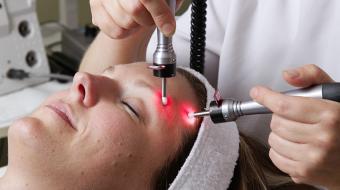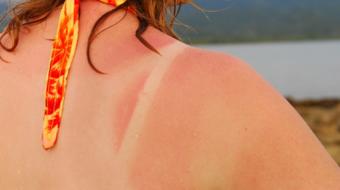Featured Videos
All Videos
How to Treat Your Sun-Damaged Skin
Many of us have spent a lot of time in the sun, whether it was tanning or playing sports. Sun damage is a common concern among North Americans, and not just older adults. People with fair skin are at the highest risk of sun damage, although with enough exposure, darker-skinned individuals will experience it, too.
Signs of Sun Damage
Some of the signs of sun damage are blotches and reddened lines around the nose and mouth, brown spots, wrinkles, and a more sallow complexion. You may also notice these changes on your neck and upper chest.
To see the effects of sun damage on your skin, simply compare an area of your body that gets sun (e.g., your face) to the inside of your arm, which is usually shielded from rays.
Treatment Options for Sun Damage
Of course, you want to be mindful of how much time you spend in the sun to reduce your risk of developing skin cancer. But there’s also the cosmetic side to sun damage. If you’re looking to improve your sun-damaged skin, here are some options:
- Products with antioxidants and retinols
- Broadband light therapy, also known as intense pulse light or photodynamic therapy. It allows for immediate return to normal activities.
- Fractionated laser treatments, which may have more dramatic results, but could leave your skin temporarily red and peeling.
- Fully ablative laser treatments, which are more intense and require a longer recovery period.
Make sure you’re wearing sunscreen every day to minimize sun damage in the future. Covering up exposed areas with clothing and hats can be another way to avoid sun damage.
Watch Out for Signs of Skin Cancer
Skin cancer ranks as the most prevalent form of cancer. There are three primary types of skin cancer. The most common one is basal cell carcinoma, then squamous cell carcinoma, followed by melanoma. While melanoma is the least common, it’s the most serious.
Symptoms of basal cell and squamous cell skin cancers tend to be small sores that grow, bleed, subside, and resurface on the head and neck. Melanoma generally begins as a flat spot and evolves into a raised lesion over time.
If you notice any of these skin cancer symptoms, talk to your family doctor or dermatologist.





